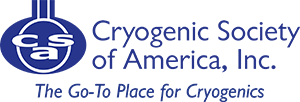Accurate predictions for performance and life of motors and bearings in cryogenic turbomachinery have become more critical than ever with rapid advancements in space as well as for the burgeoning hydrogen economy. The use of cryogenic propellants for space application includes both needs for rockets and landers, as well as for in-space propulsion and transfer. For the hydrogen economy, there is the need to pump LH2 to higher pressures in vehicles for feeding into engines or fuel cells as well as to transfer with power dense solutions. For these applications, reliable long-term operation, small size and efficiency are paramount to successful adoption. Two of the most critical components to achieve the necessary requirements in these applications are long-lasting bearings and high-speed, efficient motors. While Barber-Nichols (BN) has successfully implemented cryogen immersed motors and ball bearings in turbomachinery for over 35 years, the requirements for these new applications are pushing advancement beyond the current state of the art.
When BN started working with customers that needed cryogenic motors such as one made to drive a LH2 pump for NIST in 1989, there was very limited data available for reference to design the motor. In the early days, BN engineers worked with custom motor suppliers to identify motor construction techniques and materials that were compatible with a particular cryogen but were otherwise quite similar to standard motors. The motors would then be integrated into designs much the same way a room temperature motor would be, with consideration of fits and clearances at cryogenic temperatures. In many cases, the pumps were not tested at cryogenic temperatures until put in systems at customer sites due to budget limitations on projects. Performance feedback from customers helped guide new designs but usually did not isolate motor performance at cryogenic temperature to understand exactly how close predictions were to reality.
In the 1960s, NASA began to experiment and develop ball bearings for use in space applications that could not utilize traditional lubricants. They developed dry film lubricants such as tungsten disulfide, mostly in the form of coatings that could be applied to bearing races and cages. In the late 1970s during development of the Space Shuttle they further advanced other bearing materials such as cronidur for races, silicon nitride for balls and PTFE with molybdenum disulfide for cages that provided the lubrication. BN engineers made use of these materials in early development efforts but were driven to lower cost alternatives in many applications. BN has hundreds of pumps successfully operating today utilizing cryogenic ball bearings with the majority operating at lower speeds and loads that will be needed to meet many of these future applications in Space and Earth-bound hydrogen vehicles.
To meet the aggressive targets required in these applications, BN engineers identified the need for cryogenic test equipment to validate bearing and motor designs. Recently, a cryogenic N2 test rig (Figure 1) was commissioned and first utilized to operate bearings at 45,000 rpm to simulate conditions for an LH2 pump that must operate at these speeds in space. The primary goal of the testing was to ensure the bearing design was capable of operating at these speeds and able to meet the lifetime requirements. These bearings successfully ran at 45,000 rpm, and once the life requirement was met, the bearings were disassembled and the bearing cage ball pockets were checked for amount of wear. These cages are designed to wear to provide lubrication to the balls and races. The ball pocket wear was well within expectations, so the bearings were validated for this application while still in the product design phase.
For another space program, BN needed to validate its cryogenic induction motor design tools and actual performance of the motor and bearings in a LOX application. Figure 2 (or 2b) shows this test setup that utilizes a dynamometer to measure motor performance across a range of speeds. It also provides loads to the bearings to simulate actual conditions in the application. During this testing BN learned valuable lessons about design and operation of induction motors at cryogenic temperatures, such as the electromagnetic behavior of the induction rotor at cryogenic temperatures and its effect on rotor slip, efficiency and torque, as well as motor speed control. Premature bearing failures informed BN engineers of required clearances between components for operation at cryogenic temperatures. Several different dry film lube cage materials were also tested to determine the optimum selection.
BN has several early-phase projects using cryogenic bearing and motor testing to optimize designs. Lessons learned will validate design methodologies for motors and bearings in applications for space, the H2 economy and more in the future.
www.barber-nichols.com
Image: Recently, a cryogenic N2 test rig was commissioned and first utilized to operate bearings at 45,000 rpm to simulate conditions for an LH2 pump that must operate at these speeds in space. Credit: Barber Nichols


